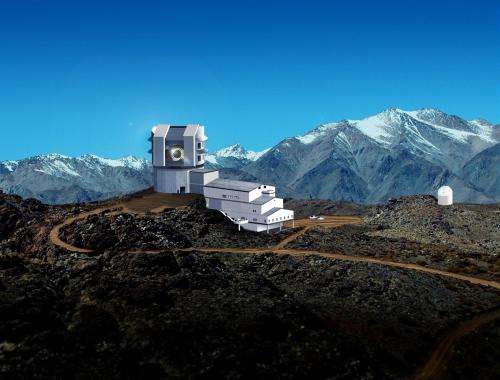Astronomers seek widest view ever of the universe with new telescope

At the annual meeting of the American Astronomical Society last week, the booth devoted to a revolutionary new telescope called the LSST got a lot of traffic.
Staffed by scientists from the University of Washington and other institutions, the display didn't feature sexy pictures of galaxies or nebulae, but it did include a sign that said LSST is hiring.
That was welcome news in a field where jobs can be hard to come by. It's also proof that after decades of planning and fundraising, a dream nurtured in part by UW and backed by Seattle billionaires is well on its way to reality.
On Saturday in Tuscon, Ariz., former Microsoft executive Charles Simonyi joined other luminaries to celebrate completion of the telescope's 20-ton mirror assembly, which includes the largest convex mirror ever made. Simonyi, who has twice visited the International Space Station as a tourist, put up $20 million for the mirror. His former boss Bill Gates chipped in $10 million.
Construction of the $700 million telescope will begin in earnest this spring on a mountaintop in Chile's Atacama Desert.
"We hope to get the first data, the first light, in 2019," said UW astronomer Zeljko Ivezic, project scientist for the telescope.
LSST stands for Large Synoptic Survey Telescope, a name even astronomers agree is clunky for what has been described as the world's most powerful sky-mapping machine. While most telescopes can take only snapshots of a narrow sliver of space, LSST will scan the heavens continuously in wide swaths.
The telescope will produce an image of the entire southern sky every three days - a feat that would take the Hubble Space Telescope 120 years to accomplish once.
The result will be the equivalent of time-lapse cinematography, allowing astronomers to track the motion of billions of objects and watch as galaxies collide and stars are born and die.
"It will be the greatest color movie of all time," Ivezic said.
With its ability to detect faint objects and peer into the far reaches of the universe, LSST was designed to tackle some of astronomy's greatest challenges, said Stanford University physicist Steven Kahn, director of the LSST project.
On the practical side, the telescope will be able to keep an eye on many more asteroids than any other survey method, and it could provide the first warning of objects on a collision course with Earth.
LSST will also look beyond the orbit of Neptune for more distant planets and search for clues to the solar system's formation.
Kahn is most excited about the chance to tackle fundamental cosmological mysteries, like the nature of so-called dark energy.
The 2011 Nobel Prize in physics was awarded to three scientists who analyzed signals from distant, exploding stars called supernovae, and reached the astonishing conclusion that the universe is expanding at an ever-faster rate, not slowing down as was expected. That discovery upended many notions about how the universe works and raised questions, foremost among them: What's driving the acceleration? Astrophysicists hypothesized there must be a "repulsive" force at work in space, which they call dark energy.
"We really have no idea what it is," Kahn said.
LSST will bring the power of big data to bear on the problem.
The original observation was based on 42 supernovae, gleaned from three years of observation with the Hubble Space Telescope. LSST is expected to detect 250,000 supernovae every year, Kahn said.
By analyzing all those signals, scientists will be able to test various theories that could explain the acceleration and, perhaps, identify the winner.
"It's capable of yielding a Nobel Prize," Ivezic said.
The amount of information flowing from LSST will be so vast that astronomers have mounted an initiative, based at the UW, to figure out the best way to process and make sense of it.
"This is changing the way we do science," said UW astronomer Andrew Connolly, who is leading the initiative. "The software is as critical to the science as the telescopes and cameras we build," Connolly said in a TED talk about LSST that has been viewed more than a million times.
Many of the new jobs at LSST focus on data analysis. Over the next two years the project aims to hire as many as 50 scientists and engineers, Ivezic said.
The telescope, a public-private partnership, is being jointly funded by the National Science Foundation and the Department of Energy.
When it's in full operation - probably by 2021 - all the data and images will be shared with the public. Anyone with a computer will be able to see it.
Schoolchildren tracking a quadrant of the sky could be the first to see a supernova explode, Kahn said.
"There's tremendous opportunity for the public to not only learn about science but participate," he said. "LSST will be a direct connection with the fact that the universe is alive and evolving and constantly changing."
©2015 The Seattle Times
Distributed by Tribune Content Agency, LLC





















